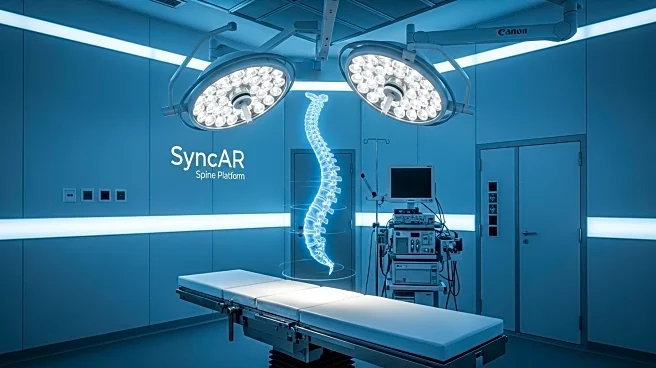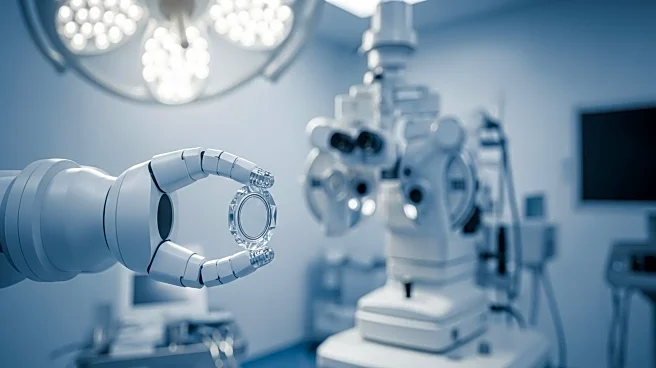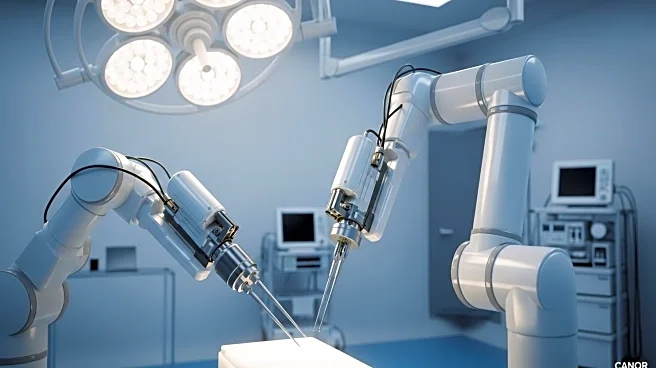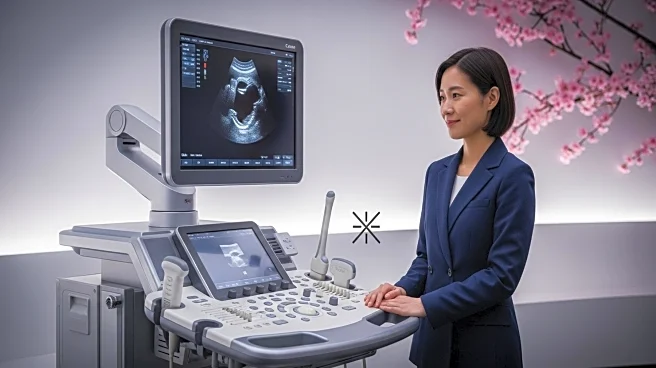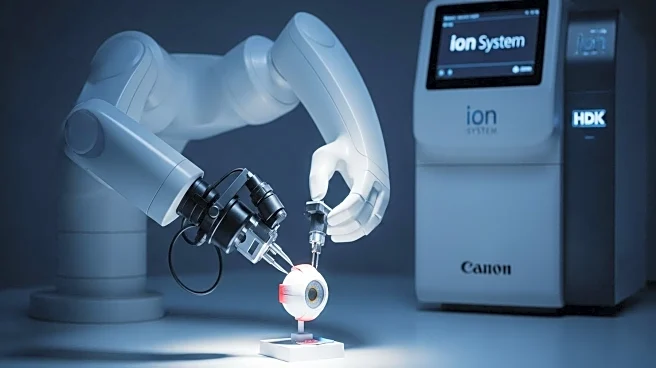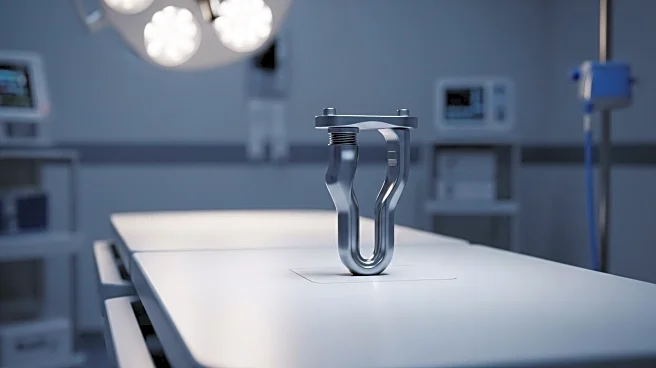What's Happening?
Surgical Theater has announced that its SyncAR Spine platform has received FDA 510(k) clearance, marking a significant advancement in spine surgery technology. The platform utilizes AI-driven tools to transform traditional 2D imaging into interactive 3D models, providing real-time intraoperative guidance. This development allows surgeons to integrate MRI and CT data directly into the operating room, enhancing clarity and control during spine surgeries. The platform is designed to work seamlessly with existing surgical workflows, offering advanced features such as vertebra segmentation, Advanced Decompression Planning, and Segmental Fusion. These capabilities enable surgeons to plan and execute surgeries with greater precision, aligning preoperative plans with intraoperative execution.
Why It's Important?
The FDA clearance of SyncAR Spine represents a major leap forward in surgical technology, particularly for spine surgeries. By integrating AI-driven visualization tools, the platform offers surgeons unprecedented clarity and control, potentially improving surgical outcomes and reducing the invasiveness of procedures. This advancement could lead to more efficient surgeries, reduced recovery times, and better patient outcomes. The ability to bring MRI data into the operating room in real-time is a significant improvement, providing visibility that was previously limited to open surgeries. As a result, the platform sets a new standard for intraoperative visualization, reinforcing Surgical Theater's leadership in surgical XR technology.
What's Next?
Surgical Theater plans to showcase the updated SyncAR Spine platform at upcoming major events, including the Congress of Neurological Surgeons Annual Meeting and the North American Spine Society Annual Meeting. These events will provide global spine leaders the opportunity to experience the platform's capabilities firsthand. The company aims to continue setting the standard in surgical visualization, with over 50,000 clinical uses of its XR platforms already recorded. The introduction of SyncAR Spine is expected to drive further adoption of AI-driven surgical technologies, potentially influencing future developments in the field.
Beyond the Headlines
The integration of AI and XR technologies in surgical procedures raises important ethical and legal considerations, particularly regarding data privacy and the accuracy of AI algorithms. As these technologies become more prevalent, there will be a need for robust regulatory frameworks to ensure patient safety and the reliability of AI-driven tools. Additionally, the shift towards minimally invasive procedures supported by advanced visualization tools could lead to long-term changes in surgical training and practice, emphasizing the importance of technological proficiency among healthcare professionals.
